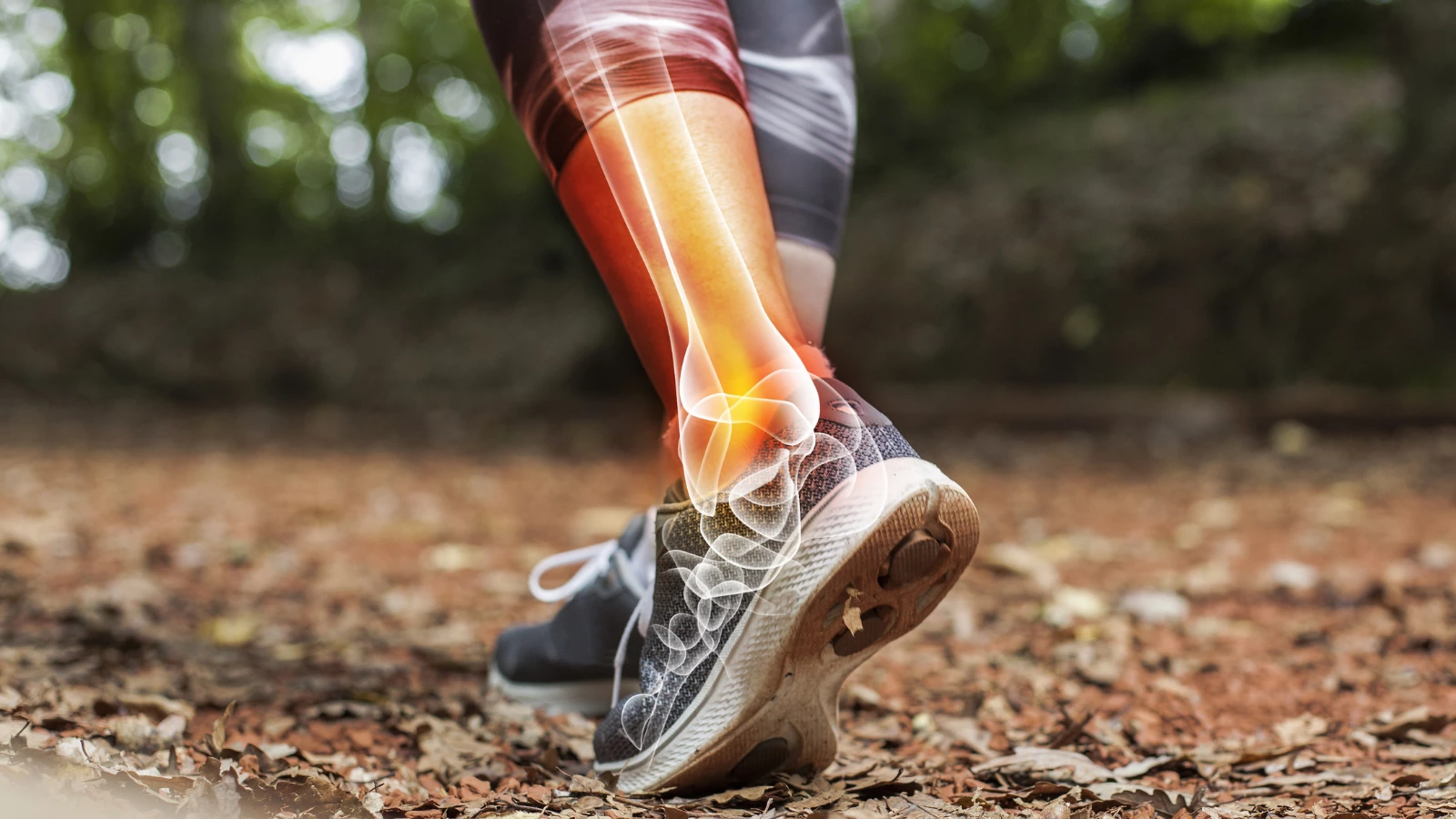How Sports Injuries Can Damage Fascia

Article At A Glance
This article on how sports injuries affect fascia is part 3 in a series discussing thickened fascia. Read parts 1 and 2 for more detailed information.
In an Italian study involving the Steccos, this one from the February 2021 issue of Diagnostics (Ultrasound Imaging of Crural Fascia and Epimysial Fascia Thicknesses in Basketball Players with Previous Ankle Sprains Versus Healthy Subjects), we see that injured connective tissues, whether fascia, tendons or ligaments heal in a thickened manner. This study looked at basketball players with a history of recurrent ankle injuries (interesting to me because I am that person) as compared to age-matched healthy controls.
The study states:
“Fascial layers may play an important role in locomotor mechanics. Recent research has revealed an association between increases in fascia thickness and reduced joint flexibility in patients with chronic pain. Ankle sprains are one of the most common injuries caused by physical activity during sports or activities of daily living and usually happen during dynamic movement. Over 50 percent of all ankle injuries cause a ligament injury. When ankle injury occurs, the mechanical receptors in the joint become damaged, leading to functional instability.”
What is Functional Instability?
The authors spent a lot of time talking about what functional instability looks like. Some of the things that were mentioned include loss of balance, loss of coordination, as well as chronic instability or a feeling of sagging, weakness, or looseness in the joint, along with any number of others. They also talked about what damaged mechanical receptors look like. When these receptors (mechanoreceptors) are damaged it leads to fouled-up proprioception. If not dealt with properly, this always leads to degenerative changes in the affected joint (bone spurs, calcium deposits, thinning cartilage joint space).
The biggest problem is not only that this process is a cycle that actually feeds itself. But it seems that few people are addressing these injuries properly to begin with. According to the study, “chronic ankle instability mostly comes about due to an inappropriate treatment following an initial injury …”
How Ankle Injuries Damage Fascia

Although I am getting ahead of myself, after breaking my ankle the second of three times playing basketball (and of course tearing the associated ligaments along with the avulsions), I used a trampoline for rehab. And after still ending up with chronic foot pain, found resolution in the hands of lower-body biomechanics expert, Shawn Eno. He’s the only person I am aware of who builds 100-percent custom orthotics specifically for those of us with crazy-high arches.
Anyway, the authors concluded that:
“Study results confirm that ultrasound imaging is an important tool for assessing the fascial layers of the leg, providing excellent anatomical definition. The posterior compartment of crural fascia was thicker than the anterior compartment, probably due to a postural reason in both groups. Moreover, they showed an increase in thickness of the epimysial fascia in basketball players with previous ankle sprains.”
Study: How Sports Injuries from Overuse Affect Fascia
Another study, this one from the October 2019 issue of the Exercises and Sports Science Review (Overuse Injury: The Result of Pathologically Altered Myofascial Force Transmission?) looked not at traumatic injuries but at repetitive injuries. What have I shown you in the past? Which one, all things equal, tends to be worse? Overuse, breaks the body down faster than it can recover and heal.
4 Problems That Makeup Most Sports Injuries
 The authors specifically mention four problems that makeup as much as 90 percent of all sports injuries. I feel they should have included patellofemoral syndrome as well.
The authors specifically mention four problems that makeup as much as 90 percent of all sports injuries. I feel they should have included patellofemoral syndrome as well.
- Plantar fasciitis
- Tendinopathy/tendinosis
- Iliotibial band syndrome
- Stress fractures
(I guess that this is an appropriate place to discuss stress fractures considering that Levin has made the case that bone is calcified fascia.)
Why Sports Injuries Can Be Hard to Diagnose

There are two things that make this study particularly relevant to both athletes and non-athletes alike, beyond the fact that work can cause many of the same types of repetitive injuries as sports. The first is that according to these authors, a whopping four out of ten athletes complain of “musculoskeletal pain of unclear origin” every year, no month, (gulp) every week. Secondly, the authors correctly “argue that the location of symptoms, which is often the site of treatment, may represent an area of compensation rather than the origin of an overuse pathology.”
This is something I am not only reminded of every day in practice but something that increasing numbers of studies are proving. Speaking of studies, the authors of this one point out four distinct pathways that subsequent “thickening” and/or “stiffness” discussed in the quote below can occur. These can “act separately or in concert.”
“Myofascial force transmission may lead to an overuse pathology. At first, a local stiffness increase can originate from different causes: muscle contraction in hypertonicity transmits radial stress to the fascia and tensions specific parts of it through direct fiber insertions. Chronic stress activates intrafascial myofibroblasts, and immobility induces changes in the water content of the connective tissue. If these processes are pronounced enough to sufficiently stiffen the soft tissue bridge to the neighboring structure, force is transferred, and over time, pain and dysfunction develop adjacently.”
Sports Injuries and the Nervous System

When we think of overuse injuries, we almost always think along the lines of physical or mechanical stresses. But guess what. This team of researchers specifically mentioned stress as it relates to the autonomic nervous system. “Contraction of myofibroblasts … has been identified in numerous fascial tissues, and … is largely governed by the autonomic nervous system. Hence, if conditions that disturb the interplay between the sympathetic and parasympathetic nervous systems are present, myofascial stiffening may occur over time due to concerted cellular contraction.”
And while it is certainly possible for people to be dominant on the parasympathetic side of their autonomic system, the reality is that sympathetic dominance is almost ubiquitous in Western society.
Soft Tissue Therapies for Sports Injuries

When I read this study’s conclusions, it not only made me glad that I learned some of these concepts a very long time ago, but helps explain why therapies like Big Donnie Thompson’s Mother-in-Law Method can be so incredibly effective when used as a regular part of one’s post-workout regimen; similar to foam-rolling but arguably far more effective.
“Therapists and health professionals should consider treating soft tissue structures adjacent to typical locations of overuse injury symptom manifestations if traditional local interventions have failed. Because of the structural linkage of the skeletal muscle via collagenous connective tissue [fascia], it is assumed that persisting local stiffness increases may over time affect neighboring and adjacent tissues.
“In fact, for a variety of pathologies including plantar fasciitis, LBP [low back pain], groin pain, ITB [iliotibial band] syndrome, and chronic shoulder pain, nonlocal abnormalities (altered mechanical tissue properties) distant to the area of symptom localization can be observed. Yet, there is a paucity of intervention studies examining the effectiveness of remote exercise in the treatment of these overuse injuries.”
Also, read...
Are You Making This Common Stretching Mistake in Yoga?
Dr. Ray Long: How to Enhance Your Breathing Capacity During Yoga
Yoga Anatomy: The Adductor Muscles in Downward Facing Dog Pose
Related courses
Breath as Medicine: Yogic Breathing for Vital Aging
Yoga and Myofascial Release: Releasing Chronic Tension with the Bodymind Ballwork Method
Yoga and Detoxification: Tips for Stimulating Lymphatic Health

Dr. Schierling is a licensed chiropractor and world-renowned chronic pain specialist. Dr. Schierling specializes in a holistic approach to helping end his patients’ chronic pain that includes Scar Tissue Remodeling Therapy.



